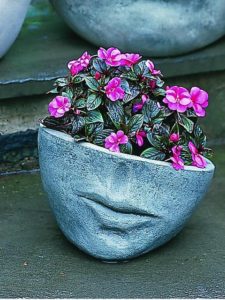In this article, we will explain what is Composting and also the Simplest Composting Methods:
4 Ways of Giving Back to Nature by Making Compost like a Pro
Every living thing will decompose one day, and organic materials such as leaves and grass are no exception. Nature has a way of recycling any organic material that has undergone decomposition into a rich soil (compost), and this is called composting.
When one does his own composting in his backyard, what he is doing is actually a faster version of natural composting. Whether one employs the basic type of backyard composting, worm composting, or grasscycling, the idea is to bring nutrients back into the soil to set the stage for new plants to grow. Being crumbly and dark brown, finished compost mimics the appearance of soil, and even smells like a forest floor.
The simplest composting methods in composting are classified into four kinds:
1. “No-turn” Composting
Compost has to be turned from time to time to allow air to circulate, and this is what makes it the least easy task involved in composting. The “no-turn” composting method, though, lets a compost get aerated without turning. By mixing in straw or other coarse organic material into the compost pile, the latter will develop into a compost material as fast as if it were turned on a regular basis. Moreover, studies show that the nitrogen present in this method may be at a higher level than that present in turned compost.
The big advantage to using the “no-turn” composting method is the ease with which new materials may be added on top of the compost pile. Fresh compost may then be easily harvested from the bottom of the compost bin used.
2. Composting Leaves
This method is preferred when there are too many leaves to be placed inside a compost bin. What is so easy with this method is the way leaves can be left to turn into compost by themselves, even without having to use the bin. The only thing to be considered in composting leaves is to make sure that drainage is adequate in the area where composting is to be done. Ensuring that the area is shaded will also help in preventing the leaf pile from drying out.
Making a leaf pile involves layering the leaves loosely until the pile reaches at least 4 feet in diameter and 3 feet in height, with a layer of dirt placed in between each leaf layer. The pile should be kept damp; to check, simply get a sample from within the center and crush in one’s hand. If some moisture drops get squeezed out, then the pile is good to go.
Four to six months is what it takes for a leaf pile to develop into a dark and crumbly compost material. Since it is low in nutrients, leaf compost is not usually used as a fertilizer; rather, it is best used as a soil conditioner to improve the soil’s quality.
3. Leaf-mould tea
Leaves may also be used to make leaf-mould tea for feeding nutrients to plants. A small pile of leaves is made and placed in burlap for immersion in a water-filled bucket or garbage can. The “tea bag” is then left to develop for three days, after which it is removed from the bucket and the leaves inside are removed and dumped into an existing compost pile. The leaf-mould tea produced is then transferred to a smaller bucket, and is now ready for use in watering plants.
4. Enclosed Compost Bins
They are the most practical to use when it comes to small-scale outdoor composting.
Makeshift Compost Bin. Any heavy-duty garbage can will do, thus making this composting method easy on the pocket. Aeration holes measuring 1.5 cm are drilled in rows 15 cm apart from each other. To speed up the composting process, organic materials with high levels of carbon and nitrogen are placed inside the can and are mixed from time to time to make sure oxygen is evenly distributed. To prevent the contents from lying stagnant inside the can whenever the bin is rolled, they have to be flipped. This is done by securing the bin’s lid, laying the bin on its side, and rolling the bin. A 2×2 or 2×4 cedar piece, running top bottom, has to be bolted to the bin’s interior to make sure the contents will budge.
Compost digester. This is a compost bin wherein the top and sides are enclosed and the bottom is open. Left to sit directly on the ground, this compost bin is ideal for use in homes with composting units that may be small but are effective at deterring pests. A compost digester wins points in the savings department. Then again, turning the compost is not easy with this method and several months have to pass before the finished compost is produced. Also, compost digesters are made of thin-walled plastic, causing its edges to easily chip, especially during winter.
Compost tumbler. Winters are not a problem when using a compost tumbler to make compost. A compost tumbler is made of an insulating material, making it ideal for maintaining the high temperature in its interiors. Moreover, this method features the ease of turning the tumbler regularly to aerate the microbes and keep them active. A built-in interior “paddle” also helps to speed up the composting process by providing more aeration and by preventing clumping of the composting material. Furthermore, a compost tumbler is inaccessible to pests, making it the ideal choice for use in residential areas with the odor-free and neatly-enclosed compost it produces.
That was all about what Composting is and the Simplest Methods of Composting.
☻ Read more books on Amazon by visiting this link: http://amzn.to/1MXckZA





Comments on this entry are closed.